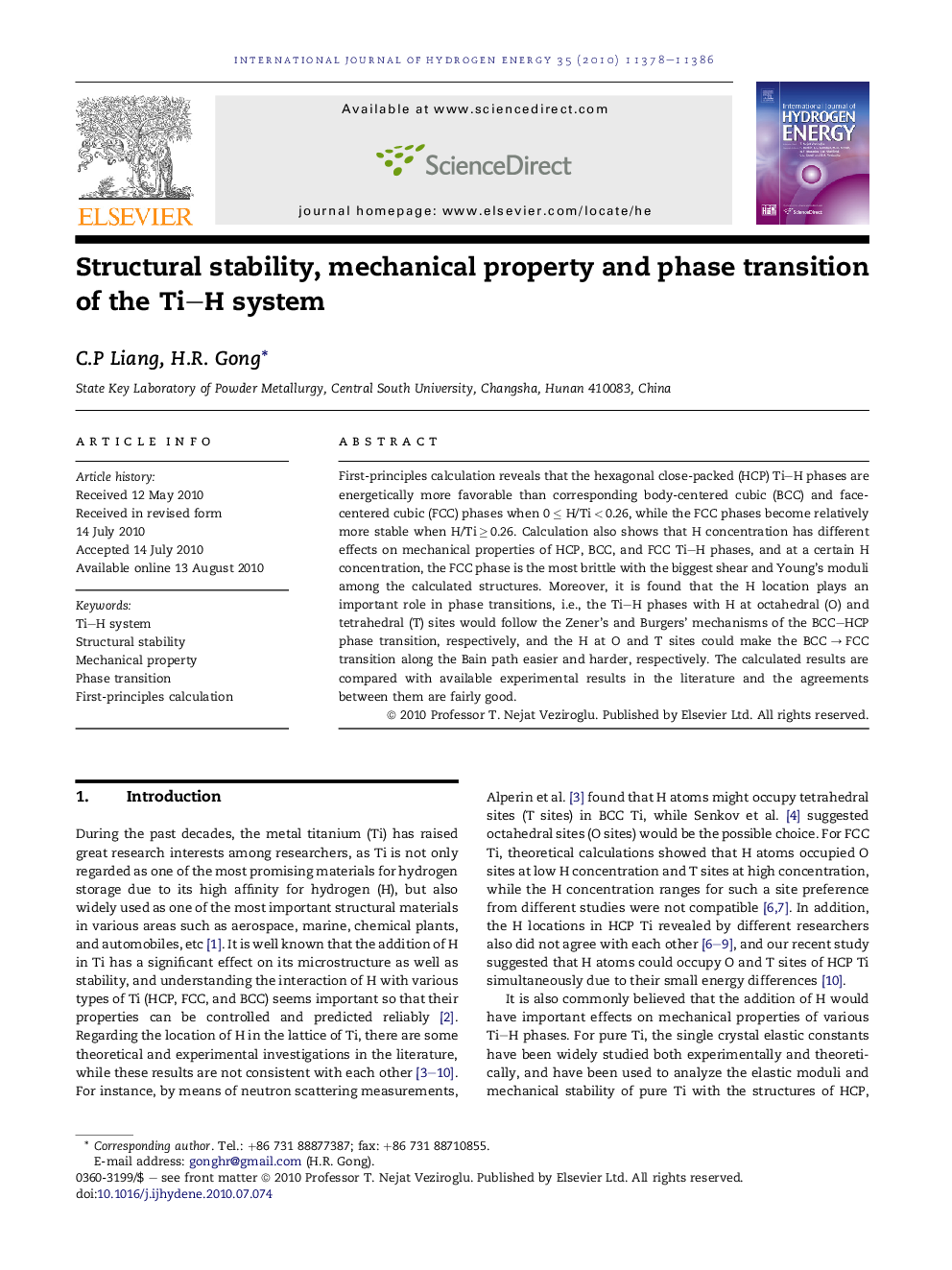| کد مقاله | کد نشریه | سال انتشار | مقاله انگلیسی | نسخه تمام متن |
|---|---|---|---|---|
| 1276739 | 1497597 | 2010 | 9 صفحه PDF | دانلود رایگان |

First-principles calculation reveals that the hexagonal close-packed (HCP) Ti–H phases are energetically more favorable than corresponding body-centered cubic (BCC) and face-centered cubic (FCC) phases when 0 ≤ H/Ti < 0.26, while the FCC phases become relatively more stable when H/Ti ≥ 0.26. Calculation also shows that H concentration has different effects on mechanical properties of HCP, BCC, and FCC Ti–H phases, and at a certain H concentration, the FCC phase is the most brittle with the biggest shear and Young’s moduli among the calculated structures. Moreover, it is found that the H location plays an important role in phase transitions, i.e., the Ti–H phases with H at octahedral (O) and tetrahedral (T) sites would follow the Zener’s and Burgers’ mechanisms of the BCC–HCP phase transition, respectively, and the H at O and T sites could make the BCC → FCC transition along the Bain path easier and harder, respectively. The calculated results are compared with available experimental results in the literature and the agreements between them are fairly good.
Journal: International Journal of Hydrogen Energy - Volume 35, Issue 20, October 2010, Pages 11378–11386